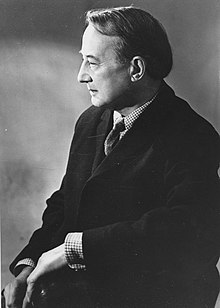Liberty Matters
Continuing the Conversation: The University and its Purpose

After reading the replies to Corey’s lead essay, I am struck by all three respondents’ concern with clarifying and confidently affirming the university’s purpose. This is at the heart of each of our criticisms of the proposal to characterize the university as “civil association.” As Elaine Sternberg explains, we may agree with Corey and Oakeshott that “promoting economically useful skills, transforming the world, or pursuing stated missions” is not the common purpose that binds together members of the university and insist also that “these scarcely constitute the universe of possible purposes” (3).
Learning, self-understanding, and liberation from the here and now appear in each of the responses as possible contenders for the university’s essential purpose. None of these stated purposes diminishes the fact that individuals will also voluntarily join the university for diverse and divergent reasons or ends. As Eric Kos reminds us, Oakeshott believed the university provides all its members an “initiation into the conversation about what it is to be human” and that university learning is conversational, in part, because it enables encounters with (and dialogue between) different modes, voices, and branches of learning (3). This reminder prompted me to consider the following question: what does civil association capture or protect about the university that the conversation model misses?
To be in conversation, we must share a common language even if the way we use our words and the things we say differ. To be in conversation, we must allow ourselves to lose sight of an end goal and truly listen to our interlocutors with humble curiosity, entering a state of openness to the unexpected twists and turns that conversations invariably take. To be in conversation we must be “civil”—one of the essential ingredients of a healthy university that Corey values—which entails respecting that the other likely holds different commitments or plans than oneself, but that they share a desire to learn and are, also, in pursuit of self-understanding. Put differently, conversation requires honoring others as moral equals. When these elements of a conversation are missing or break down, the conversation suffers or becomes impossible.
I wonder if the conversation model – which Oakeshott of course uses to describe education, though it extends beyond the meeting place of the university – is better suited than “civil association” to identify and celebrate the conditions for liberal learning and the threats to the university and its purpose. Since Corey is fully aware of Oakeshott’s discussion of education as conversation and chose to pursue an alternative and novel intervention in her lead essay, however, she clearly had reason to look beyond “conversation” to satisfy her concerns. I am grateful for this conversation and look forward to considering Corey’s additional reflections on the challenges of describing and defending liberal learning and the university today.
Copyright and Fair Use Statement
“Liberty Matters” is the copyright of Liberty Fund, Inc. This material is put on line to further the educational goals of Liberty Fund, Inc. These essays and responses may be quoted and otherwise used under “fair use” provisions for educational and academic purposes. To reprint these essays in course booklets requires the prior permission of Liberty Fund, Inc. Please contact oll@libertyfund.org if you have any questions.